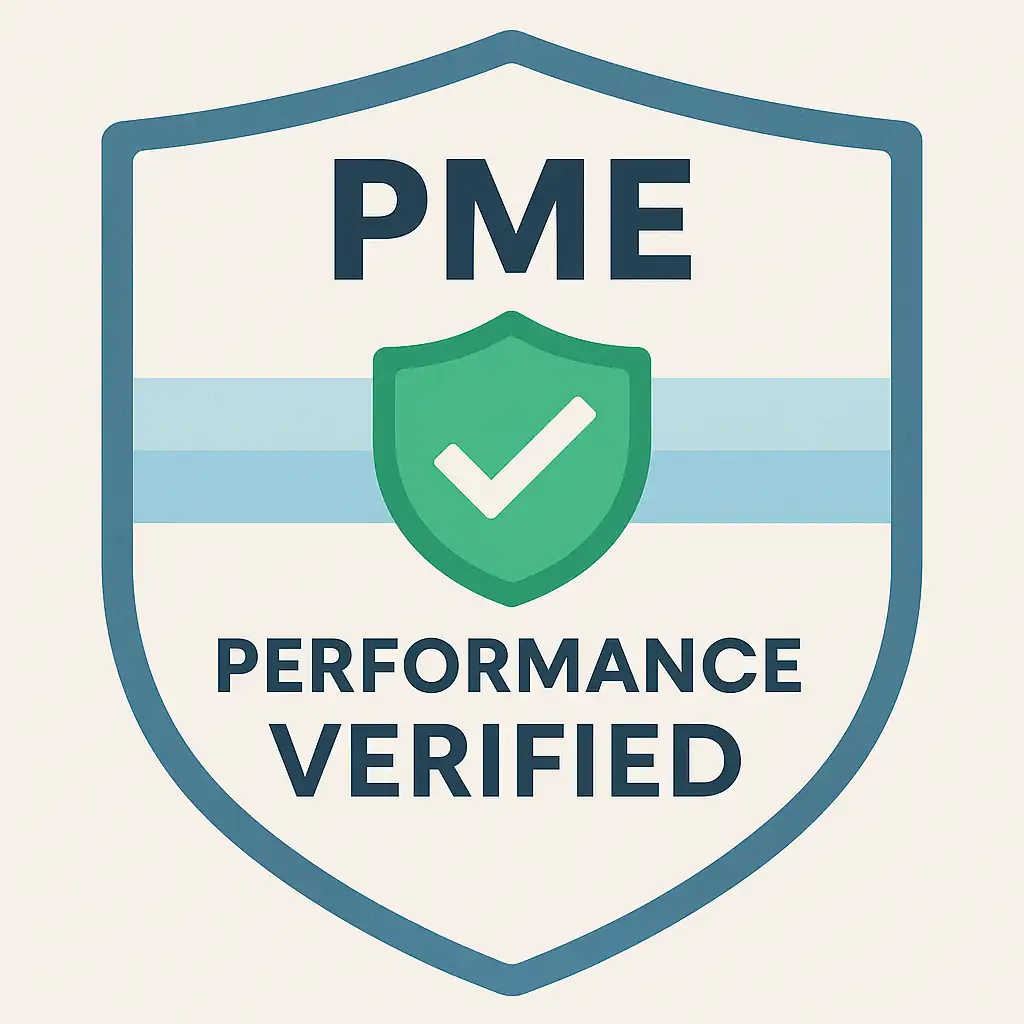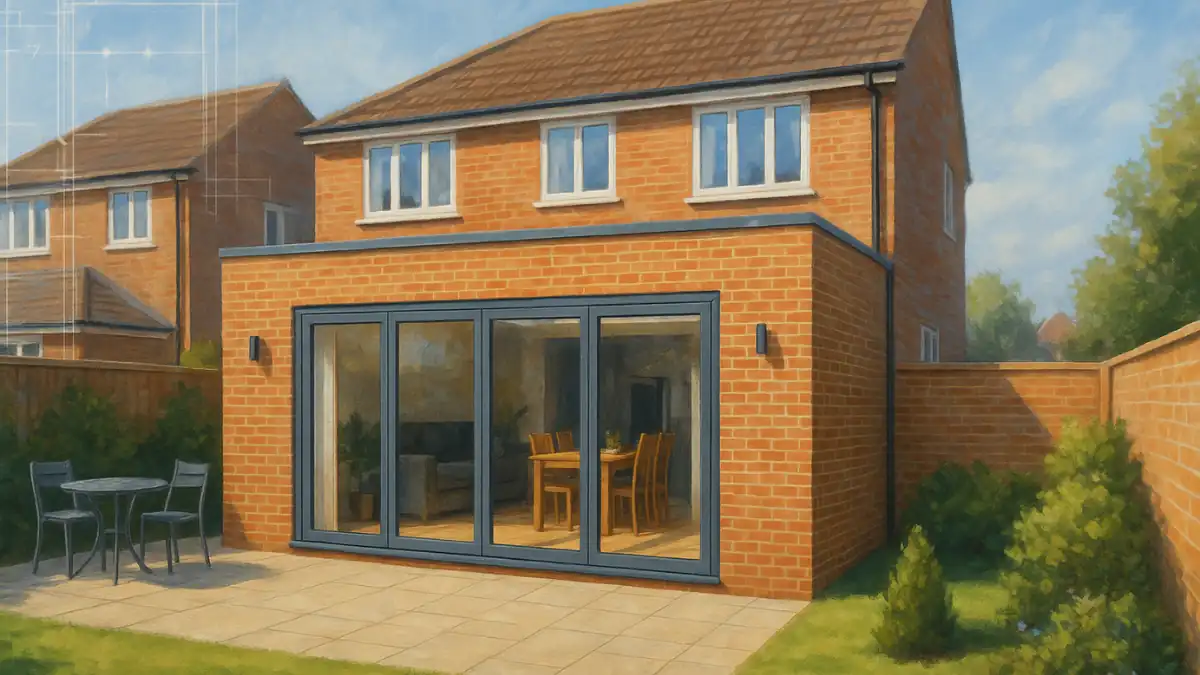Share this post:
Planning Permissions for Extensions can feel complicated, but the decision usually comes down to size, height, position, and any special designations such as conservation areas or listed status. In many cases you may not need a full application because Permitted Development (PD) rights cover modest additions.
This support guide explains what you can and can’t build, how to check your proposal, and the practical steps to secure approval quickly. If you’d like us to review drawings or submit on your behalf, we’re happy to help.
Thinking about an extension?
Our team can check your idea against local rules, prepare plans, and manage the submission.
Quick overview
There are two main approval routes for extensions in England: build under Permitted Development or apply for householder planning permission. Either way, separate Building Regulations approval still applies.
- Small rear or side additions often qualify under PD if they respect height, depth and boundary rules.
- Larger works, front-facing changes, roof alterations near the highway, or projects in sensitive locations usually need planning permission.
- Terraces, semis and detached homes have different PD limits; flats and maisonettes do not benefit from householder PD rights.
For deeper background, our hub guide to planning permission explains the national basics and how councils interpret them.
Do you need planning permission?
The rules for Planning Permissions for Extensions hinge on where you extend, how far you project, and how tall the new structure is. As a simple rule, rear extensions within PD depth/height limits and using similar materials can be lawful without permission, subject to conditions.
When Permitted Development might be enough
- Rear extension within PD depth (varies by house type) and height limits.
- Side extensions that are single storey, modest width, and not fronting a highway.
- No verandas, balconies or raised platforms above the allowed thresholds.
- Materials visually similar to the existing house.
If your design pushes beyond PD, you’ll need to apply. Our guide Do I Need Planning Permission for an Extension? explains the trigger points and how to adapt a scheme to stay within limits.
When in doubt, apply for a Lawful Development Certificate (Proposed) to prove PD before you build. It’s optional, but mortgage lenders, buyers and solicitors value the paper trail.
Building Regulations – what you must get right
Planning considers what you can build and where. Building Regulations cover how you build it. Even a PD extension usually needs:
- Structure (foundations, beams/lintels, loads).
- Fire safety and escape routes (Part B).
- Thermal performance and airtightness (Part L).
- Drainage, fall pipes, and connections (Part H).
- Ventilation rates and extract fans (Part F).
- Electrics, glazing safety, and stair geometry where relevant.
We prepare clear extension drawings and notes so your builder and Building Control know exactly what to do and you pass inspections first time.
Typical costs & timelines
Two timeframes matter with Planning Permissions for Extensions: the council decision window and the build programme. Most householder applications target an eight-week decision, but it can vary with consultations and workload. See our guide to planning permission timelines for stage-by-stage expectations.
- Planning application costs: application fee + drawings + any specialist reports.
- Build costs: strongly affected by size, specification and access.
- Building Control: either Local Authority or Approved Inspector fees.
If permission is refused, you can revise and resubmit or lodge an appeal. We cover options in Planning Permission Refusal and Planning Permission Appeal.
Not sure if your idea fits Permitted Development?
We’ll check your project against PD rules and let you know if you need a full planning application.
How to get your extension approved (step-by-step)
| Step | What to do | Why it matters |
|---|---|---|
| 1) Feasibility | Measure the plot, check designations (conservation area/listed), and map boundaries. | Confirms if PD is realistic or if you must apply. |
| 2) Sketch & tweak | Prepare outline drawings to PD or policy limits; consider neighbours’ outlook and light. | Reduces refusal risk and avoids redesigns on site. |
| 3) Pre-app (optional) | Seek informal feedback where the site is sensitive. | Surfaces objections early and guides refinement. |
| 4) Application pack | Prepare location plan, block plan, existing/proposed drawings, and statements if needed. | A complete, well-annotated set speeds validation. |
| 5) Submission | Submit online and pay the fee. Track validation and consultation dates. | Keeps your programme realistic. |
| 6) Decision or tweaks | Respond promptly to requests. Consider minor amendments if raised. | Maintains goodwill with the case officer. |
| 7) Building Control | Move to Full Plans or Building Notice route with specification notes and details. | Ensures the build passes inspections first time. |
We can handle drawings, forms and communication with the council for you. Start with our complete guide to house extensions.
Common mistakes we see
- Designing to internal wish-list rather than external limits. PD depth/height often sets the envelope.
- Forgetting eaves/gutter and boundary distances. Overhangs count.
- Mixing materials that don’t “match” the host, undermining PD compliance.
- Starting work before proving PD with a Lawful Development Certificate.
- Skipping proper drawings, which leads to on-site guesswork and cost overruns.
Technical details that often affect outcomes
- Daylight/sunlight & outlook: Overshadowing neighbours can sink an otherwise attractive scheme.
- Drainage runs: Sewers within 3m of foundations usually require agreement with the water authority.
- Access & construction management: Narrow sites may need a logistics plan to reassure planners.
- Energy performance: Higher insulation and airtightness are now standard expectations for extensions.
FAQs: Planning rules for extensions
Is my extension allowed under Permitted Development?
Possibly. It depends on depth/height, where it sits on the plot, and whether PD rights are limited by an Article 4 Direction or listed/conservation status. If you’re close to the limits, apply for a Lawful Development Certificate to confirm it before building.
What drawings do I need to submit?
Typically: site location plan, block plan, existing and proposed floor plans and elevations, plus a roof plan where relevant. We prepare extension drawings that satisfy both planning and Building Regulations requirements.
How long does a householder application take?
Most target eight weeks from validation to decision, though consultees and workload can extend this. See Planning Permission Timelines for each stage and what to expect.
What if the council refuses my application?
Consider a quick redesign based on feedback and resubmit, or escalate to an appeal if policy supports your case. Our guides on refusals and appeals explain the options.
Do Building Regulations apply if I’m within PD?
Yes. Planning and Building Regulations are separate. You’ll still need structure, insulation, drainage and fire safety to comply. We can prepare the Building Regulations package so you pass inspections first time.
Next steps & useful guides
- Start with the basics: Planning Permission (UK): The Complete Homeowner’s Guide
- Deciding your route: Do I Need Planning Permission for an Extension?
- Cost your project: Planning Permission Cost and Extension Costs
- Prepare a compliant pack: Extension Drawings Explained & Building Regulations
- Timings to plan around: Planning Permission Timelines
- If things wobble: Planning Permission Refusal and Planning Permission Appeal
Key Facts Snapshot
- Main routes Permitted Development (if eligible) or Householder Planning Permission.
- Paperwork Location plan, block plan, existing & proposed drawings; statements where needed. Consider a Lawful Development Certificate for PD.
- Decision timeframe Typically ~8 weeks from validation (varies by council and consultation).
- Still required Building Regulations approval for structure, fire, insulation, drainage and ventilation.
- Common blockers Overshadowing/overbearing impact, Article 4 Directions, conservation/listed status, highway-facing changes.
- Where to start Check if PD is possible, then prepare clear extension drawings to planning and regs standards.
Trusted external resources
Need a second pair of eyes on your plans?
We prepare planning and Building Regulations drawings, ready for council and builder.
Ready to move your project forward?
Plans Made Easy can prepare compliant plans, manage submissions, and guide you from idea to approval.
This article supports our pillar resource on extensions. It uses UK rules and terminology. Local policies vary — always check your council’s guidance or ask us to review your specific scheme.

Performance Verified ✅
This page meets PME Optimisation Standards — achieving 95+ Desktop and 85+ Mobile PageSpeed benchmarks. Verified on


